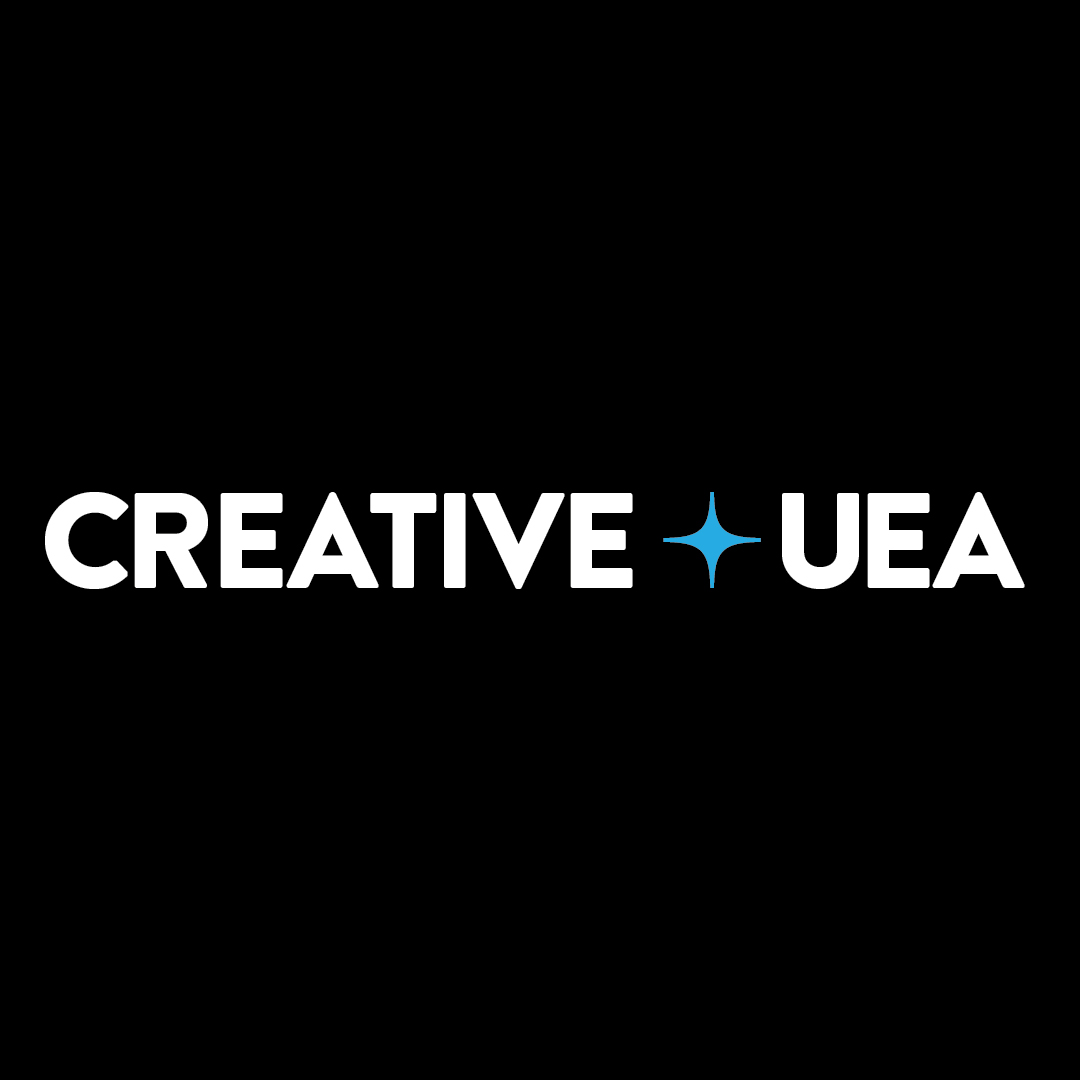HEritage and imaginaries
of the coast
Exploring the meaning of heritage and fishing with Great Yarmouth residents
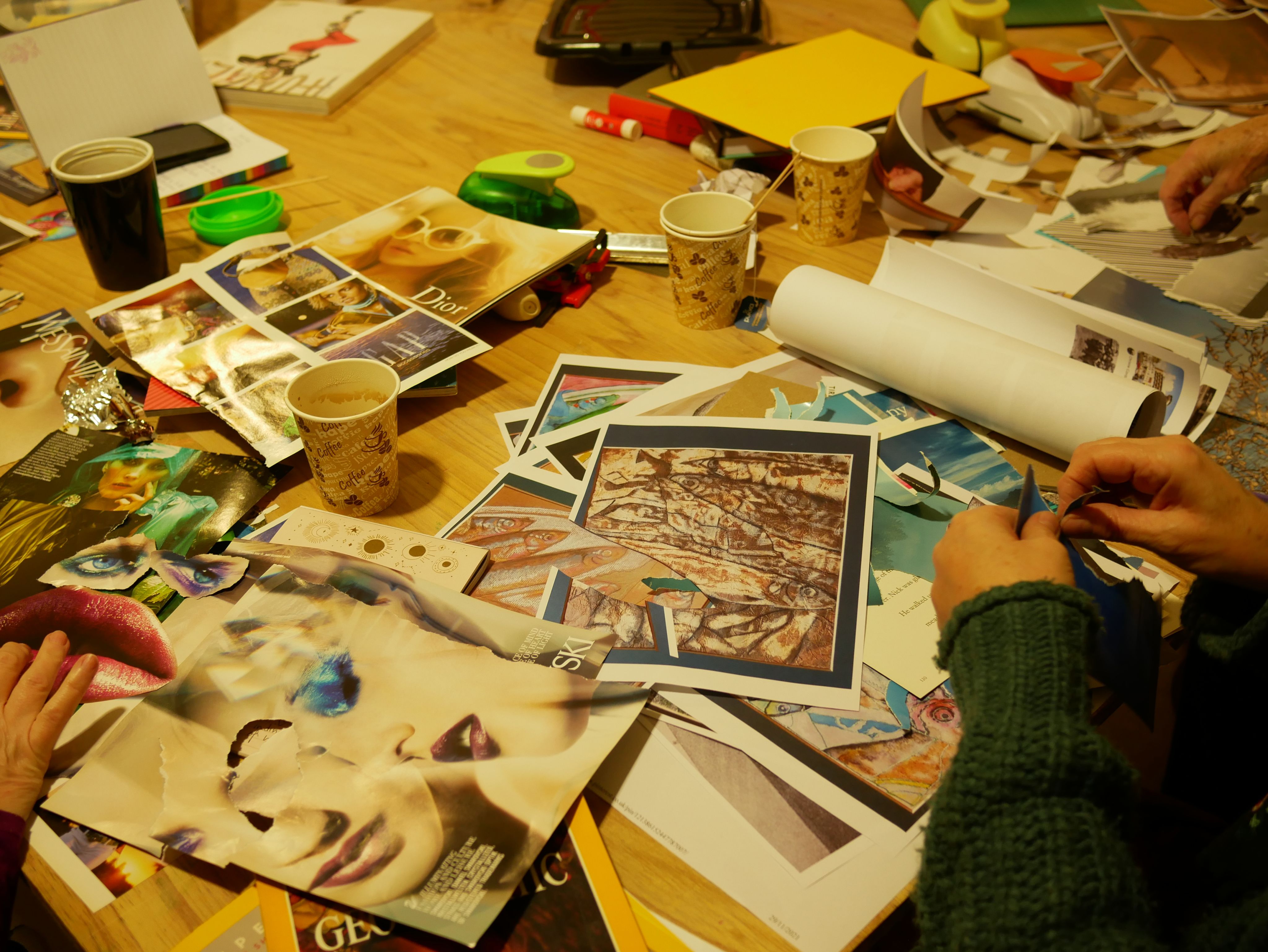
A collage display at the University of East Anglia explored the meanings of heritage and fishing amongst residents of Great Yarmouth. Working with UEA researchers, residents shared and expressed creatively what heritage means to individuals, families, the town itself, and wider society.
The silver darlings
The ‘silver darlings’ - as herring are known from the East Anglian Coast to the North-East of Scotland - gave Great Yarmouth a prominent role in the English fishing industry in the 19th and early 20th centuries; a unique past that continues to have a profound influence on the town to this day.
The decline of the industry - which is often seen to accompany a downturn in the fortunes of the town as a whole - started between the two world wars, as boats were requisitioned for military service. It was aggravated by pressure on fish stock. In the 1960s the oil and gas industries became the town’s main employers. For the eight residents of Great Yarmouth who have produced the collages on display at UEA, effort and commitment to revitalise the town’s social and ecological landscape is not only necessary, but urgent.
Allison Harding, Marina Hope, Michael Keenan, Bridget Smith, Mary Spragg, Eleanor Trett, Fran Turner, and Sue Tyler attended collage workshops on Heritage and Fishing facilitated by UEA’s School of International Development in November and December 2021 at PrimeYarc, an arts space in the town centre. They worked with UEA researchers to share and express creatively what heritage might mean to individuals, families, Great Yarmouth itself, and wider society.
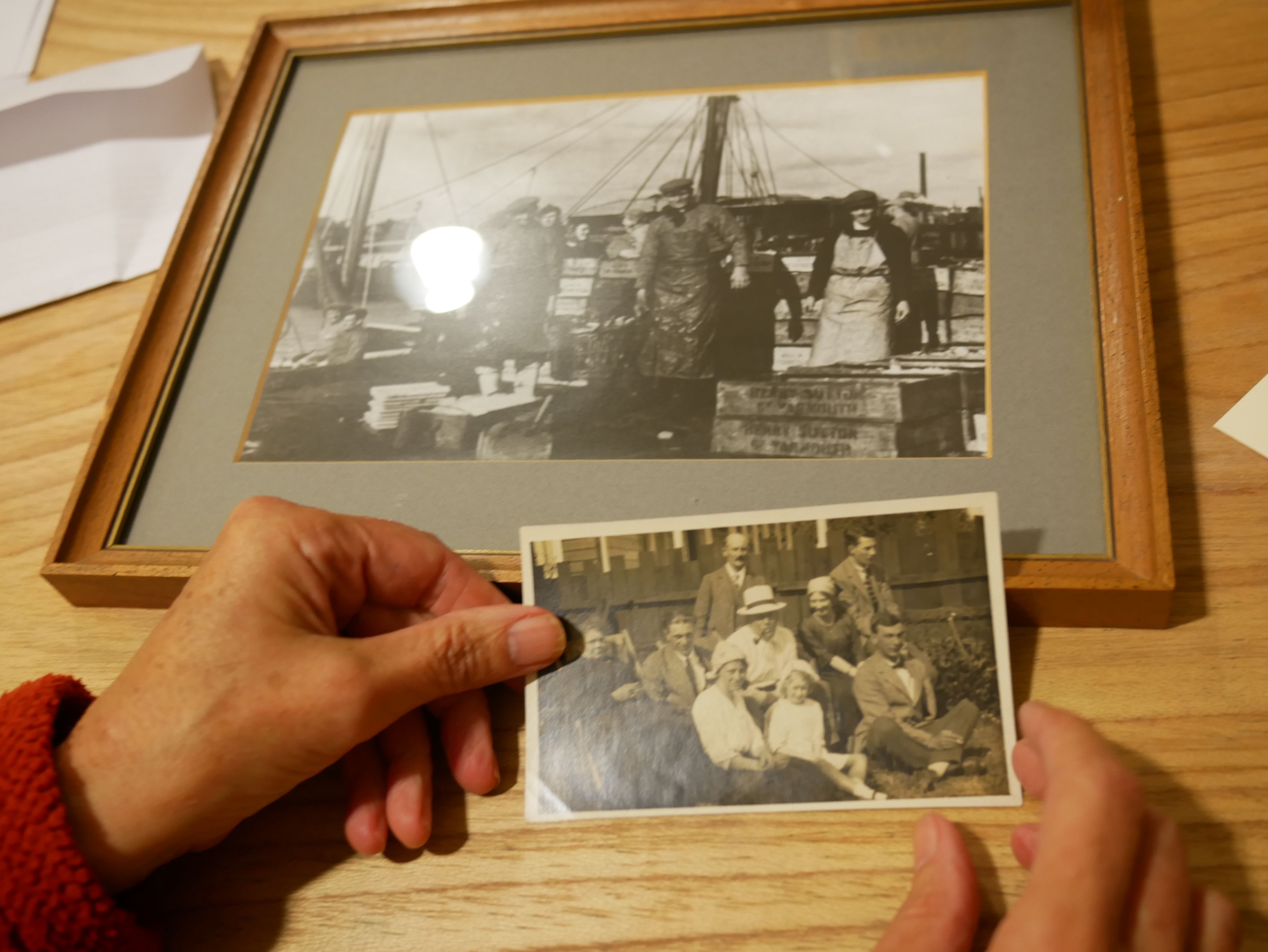
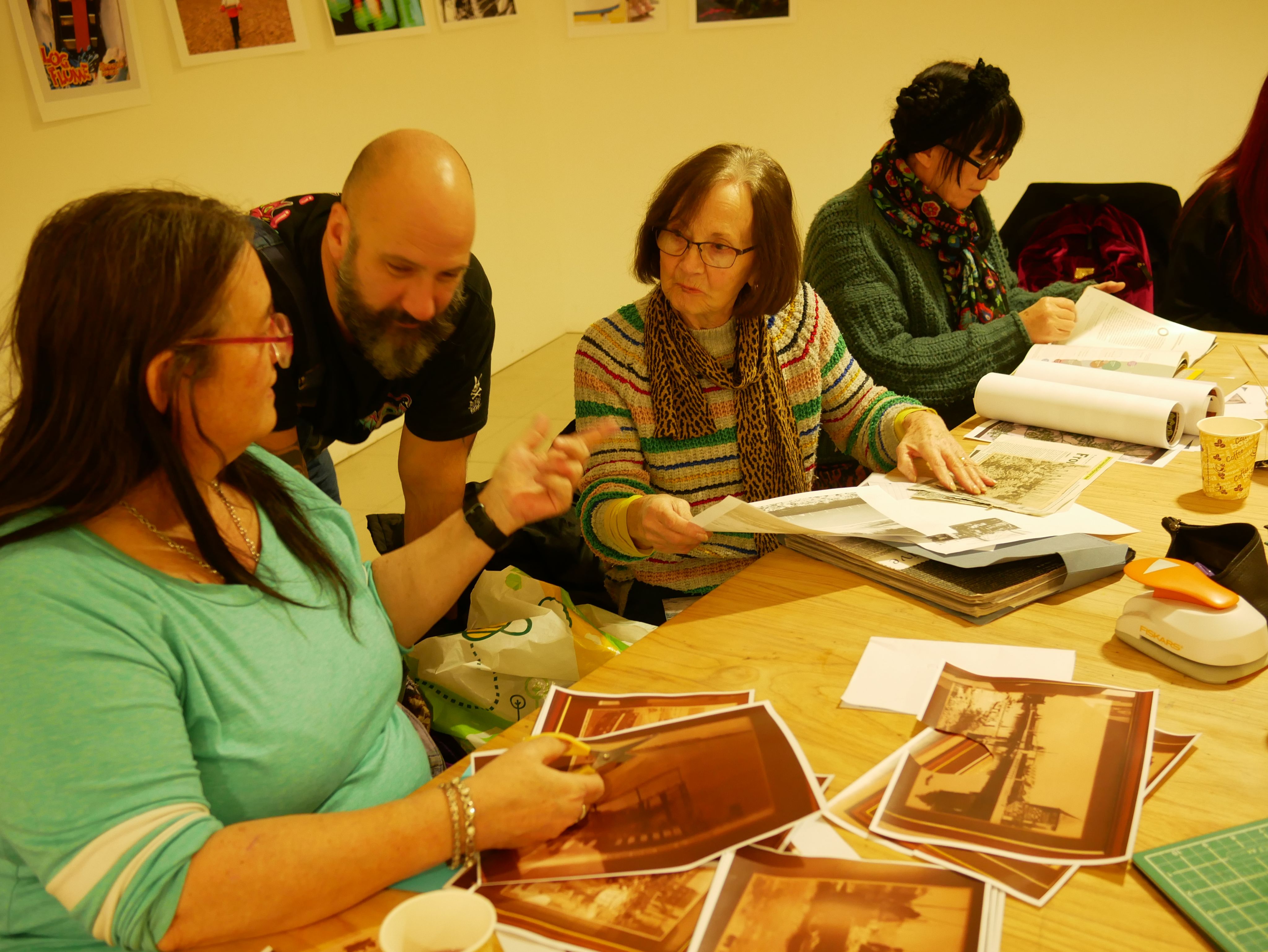
Pushing against the tide
The resulting works - produced with the support of originalprojects;, collage artist Pushkin, Out There Arts and the Time and Tide Museum of Great Yarmouth Life - showcase both personal and collaborative thinking about the way individual experiences intersect with the wider history of Great Yarmouth, connecting us all in a web of images that evoke past, present and future dynamics.
This project addresses the issues caused by the transformation of Great Yarmouth by listening to the voices of different generations, especially the descendants of those who worked in the fishing industry. Some have a direct memory of the town’s recent past; others have been informed by stories shared by parents and grandparents. This active, multi-vocal approach is a process of remembering the past to understand the present and through creative interpretation, hopefully influence the future.
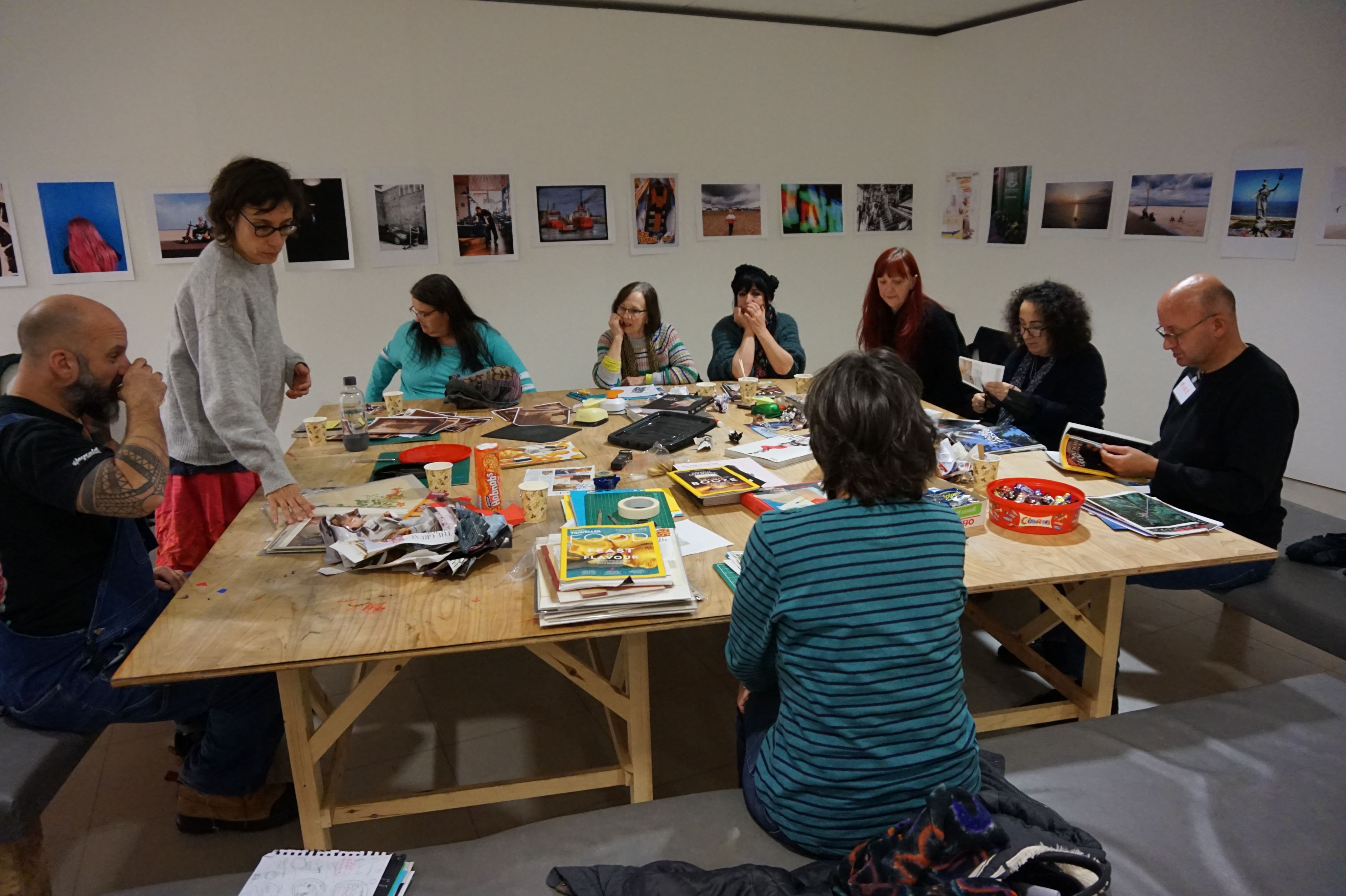
A collage workshop at PrimeYarc, led by Maria Abranches and Elena Horton from UEA's School of International Development
A collage workshop at PrimeYarc, led by Maria Abranches and Elena Horton from UEA's School of International Development
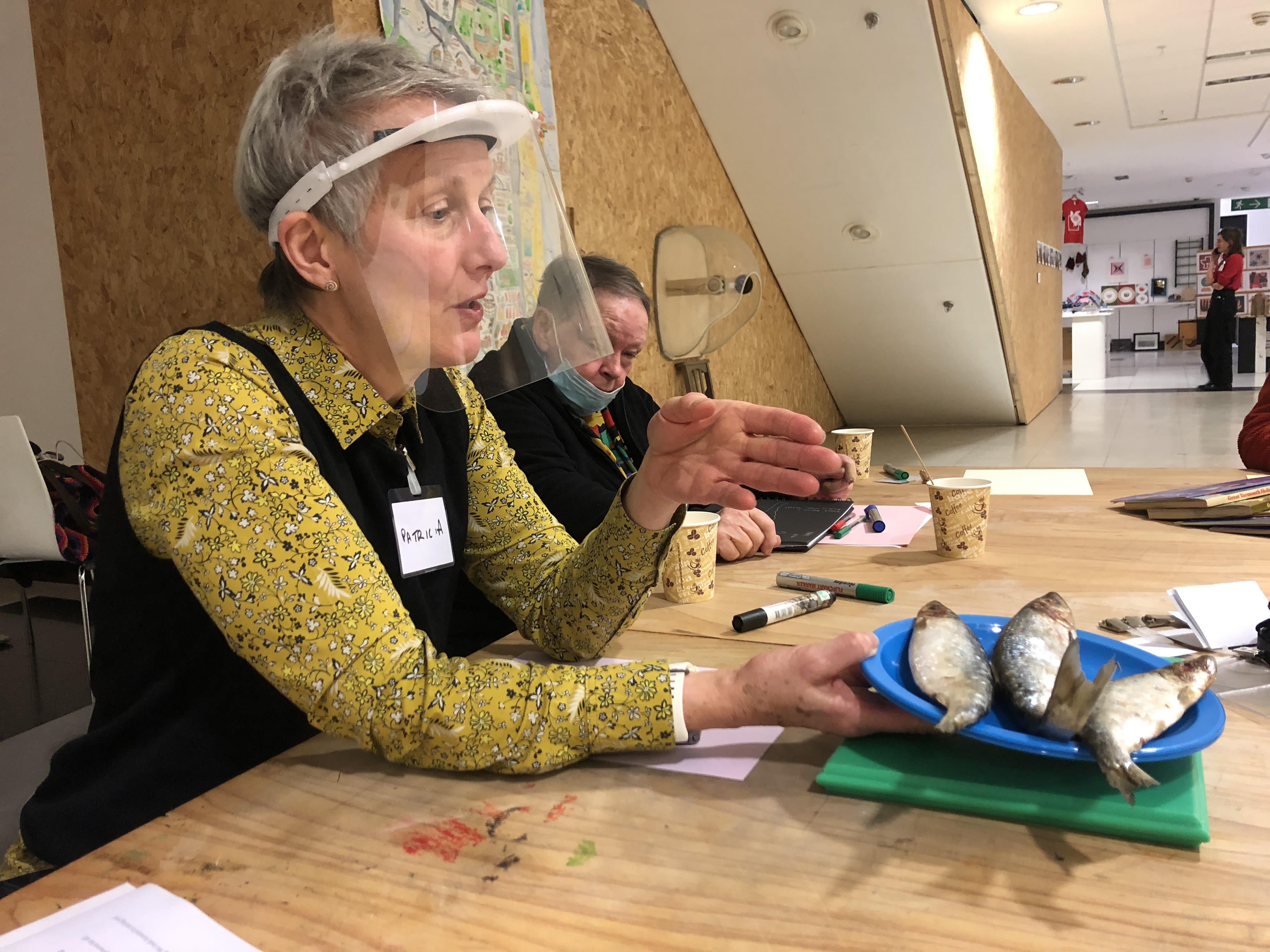
A collage workshop at the Time and Tide Museum of Great Yarmouth Life, led by Maria Abranches and Elena Horton from UEA's School of International Development
A collage workshop at the Time and Tide Museum of Great Yarmouth Life, led by Maria Abranches and Elena Horton from UEA's School of International Development
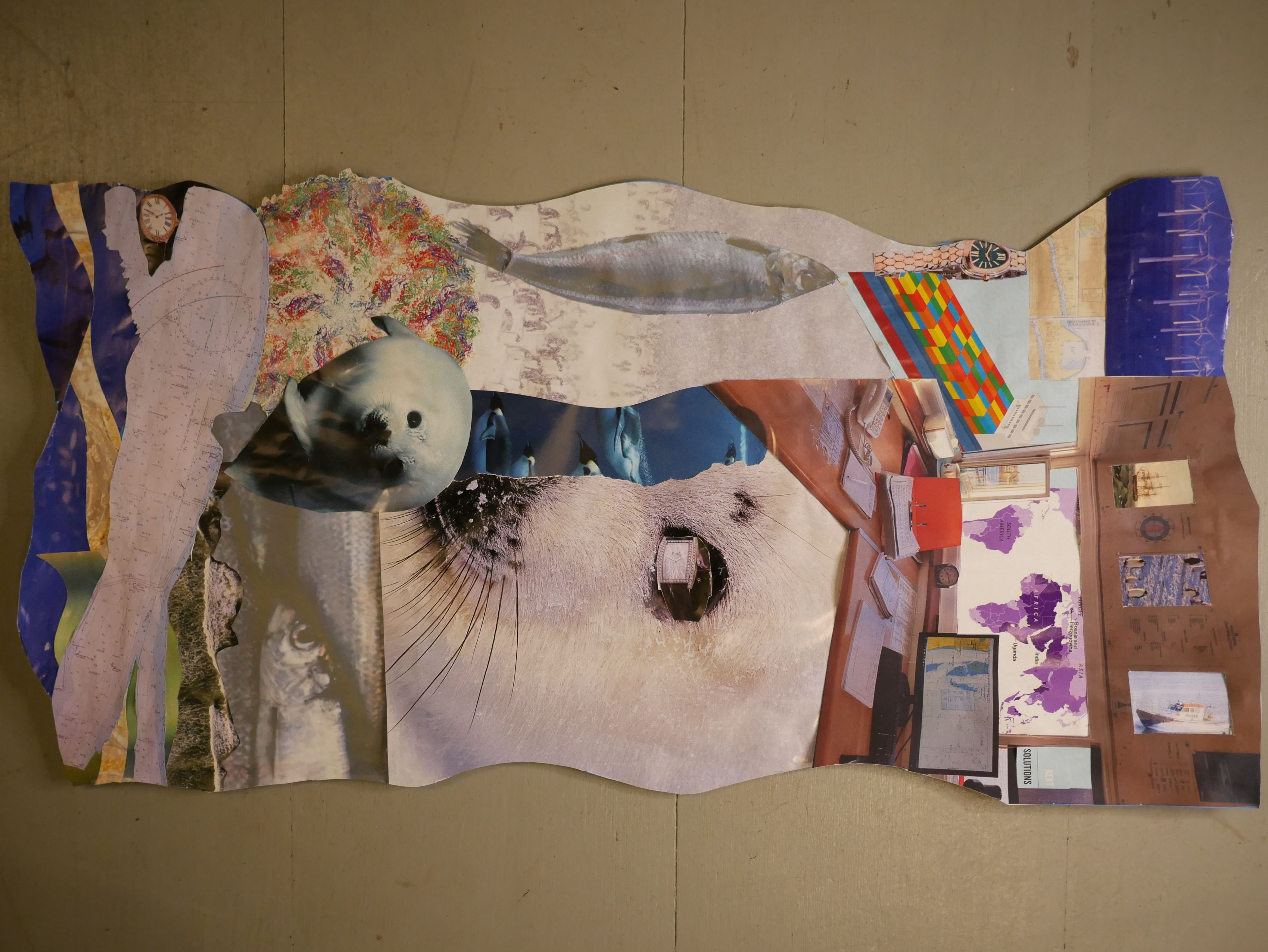
A collage produced by Bridget Smith at the workshop
A collage produced by Bridget Smith at the workshop
“Because I volunteered for the Coast Watch, I took a picture of our office, which looks out to sea... It’s got a little trawler ship in there to reflect the history, I am trying to combine the contemporary and the heritage together. It’s got the herring, fishing and the seals, which we often see bobbing up in the sea when we’re on watch. And this is part of the chart that we use, which has the sand banks that are off the coast - that’s quite a cool thing. And then I put the watches in to signify time passing and how things have changed over the years.”
Bridget Smith, workshop participant and Great Yarmouth resident
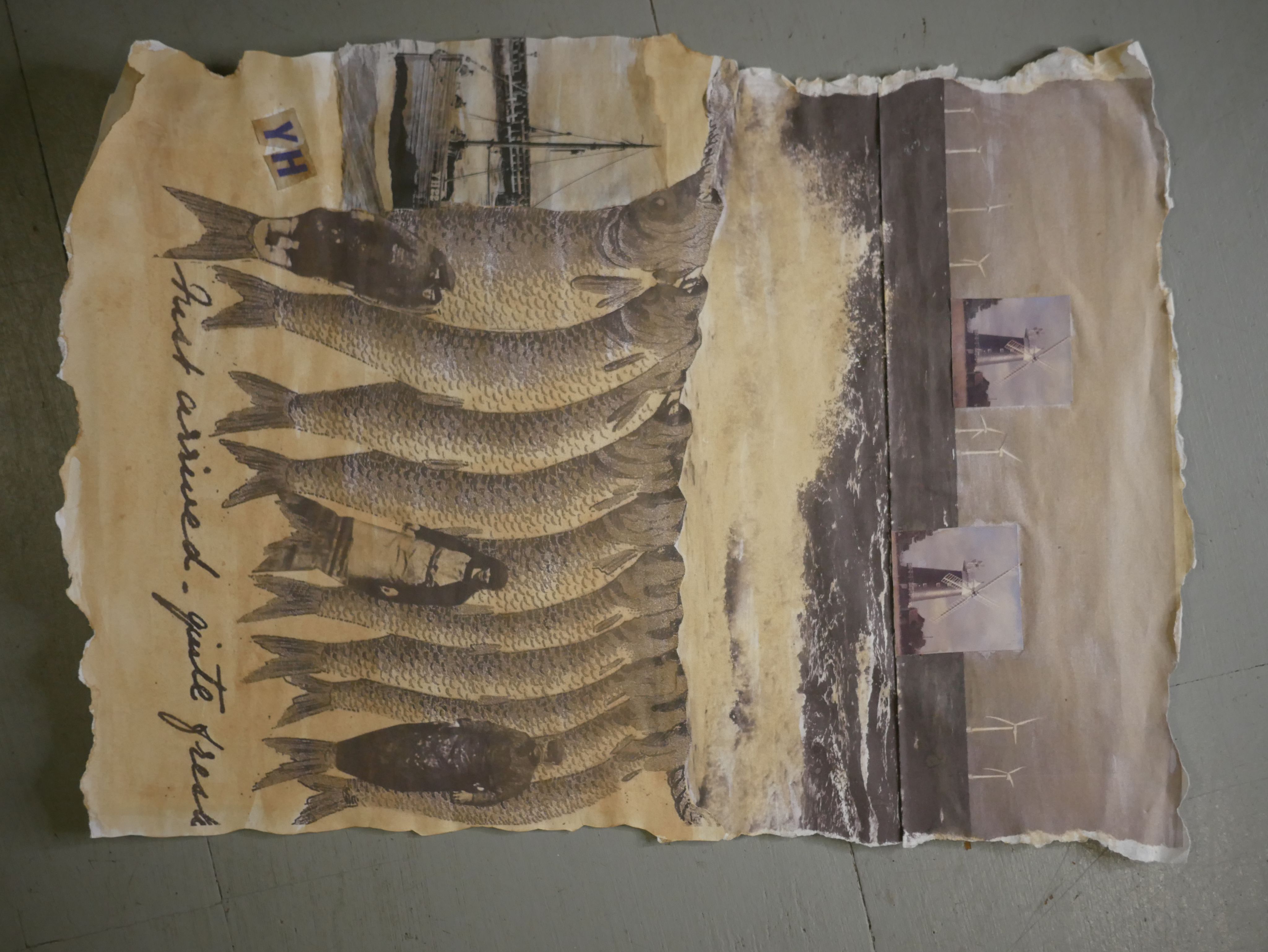
A collage produced by Eleanor Trett at the workshop
A collage produced by Eleanor Trett at the workshop
The Fisher Coast
Heritage and Imaginaries of the Coast is part of FisherCoast, a larger ESRC funded project, supported by the EU-India Platform for Social Sciences and Humanities (EqUIP), on Fishers and Coastal Transformations.
With colleagues in India, Slovenia and Norway, researchers from the School of International Development and the School of History at UEA have been working towards a better understanding of the impact of economic and social coastal transformations in different countries, focusing on the fishing communities who are most affected by such transformations.
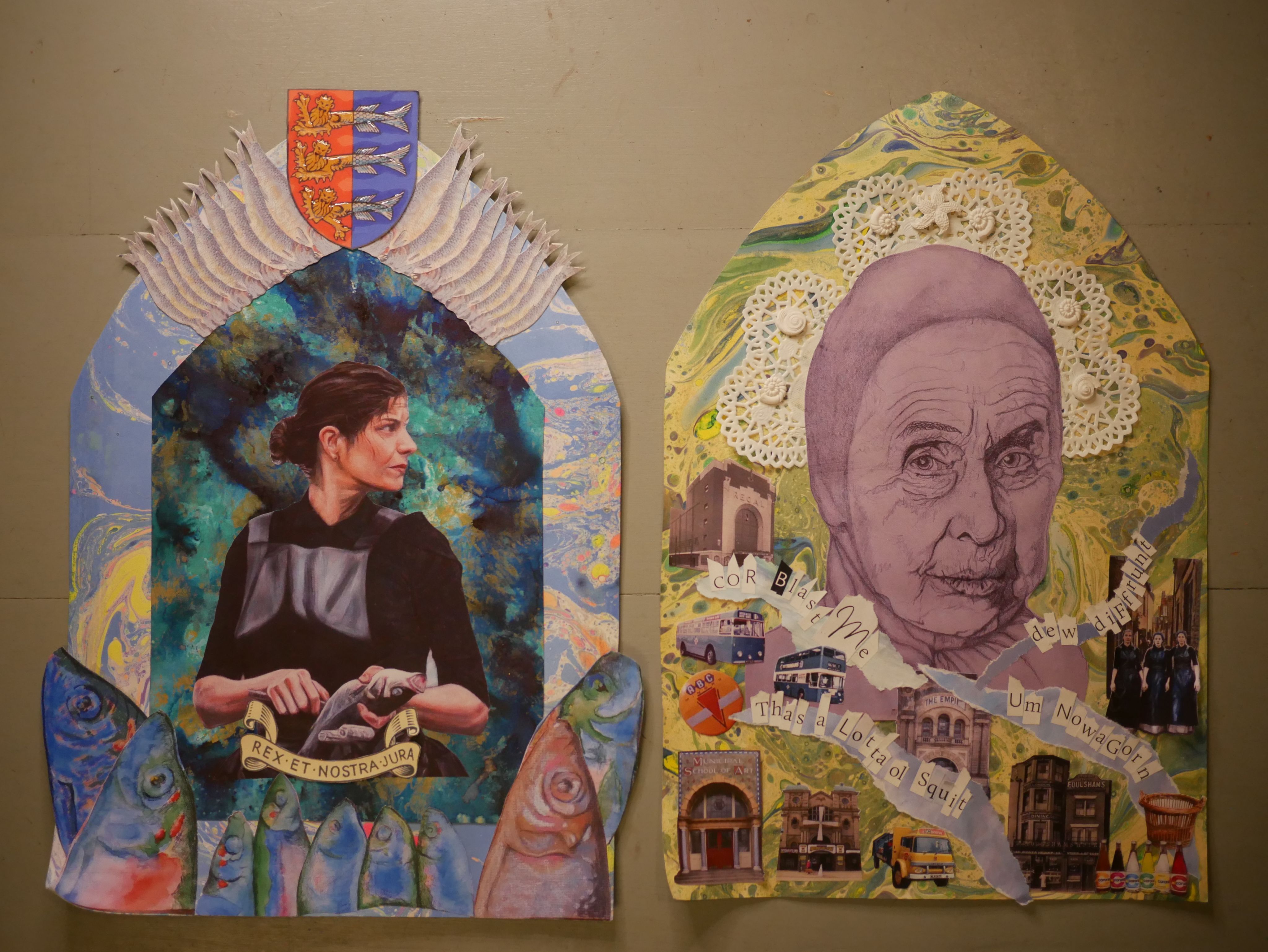
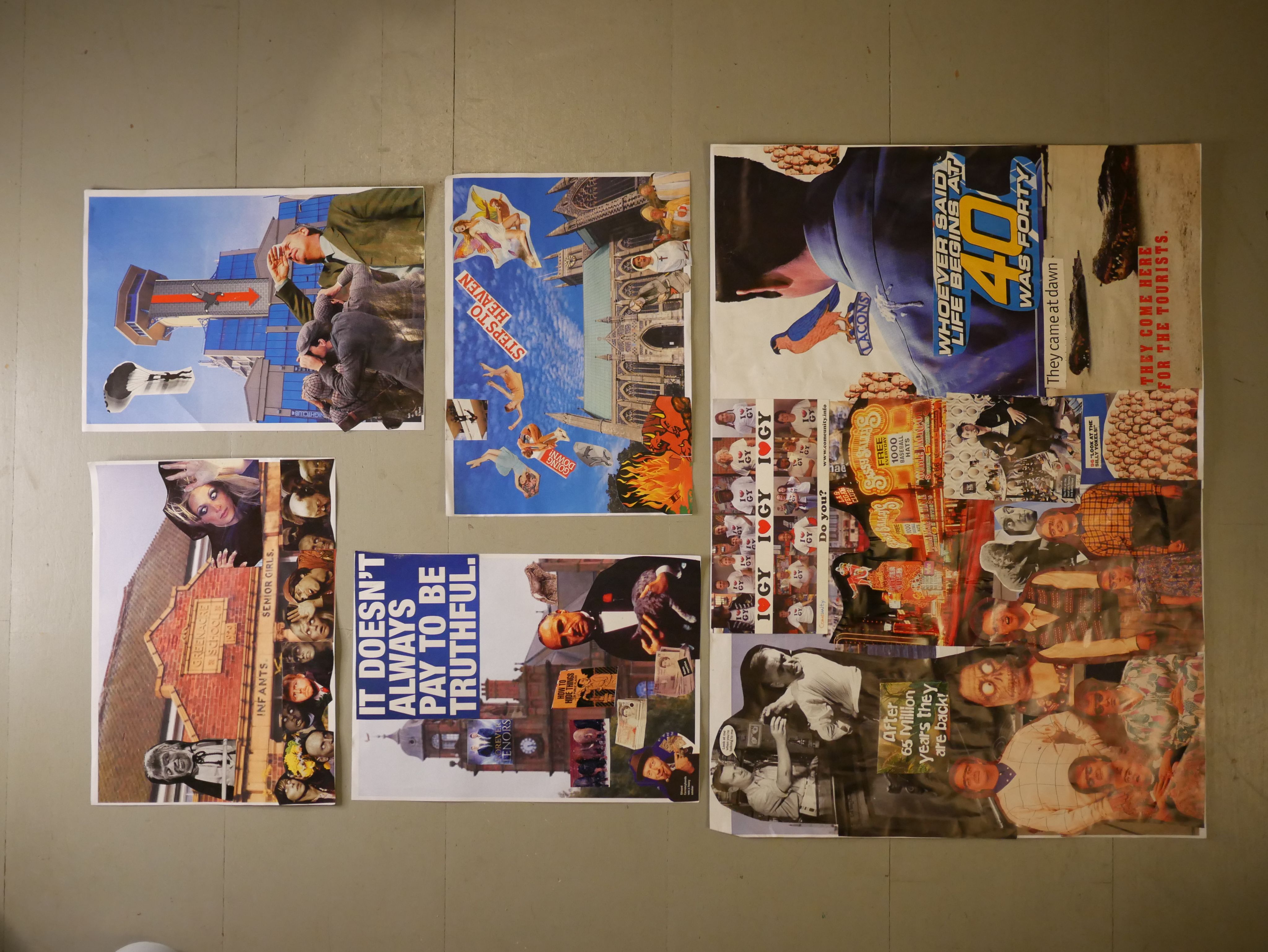
Heritage and Imaginaries of the Coast was at the Enterprise Centre, University of East Anglia,
Norwich Research Park, Norwich, NR4 7TJ
Free admission
Monday - Friday
9:30 - 16:30
2 February - 28 February 2023
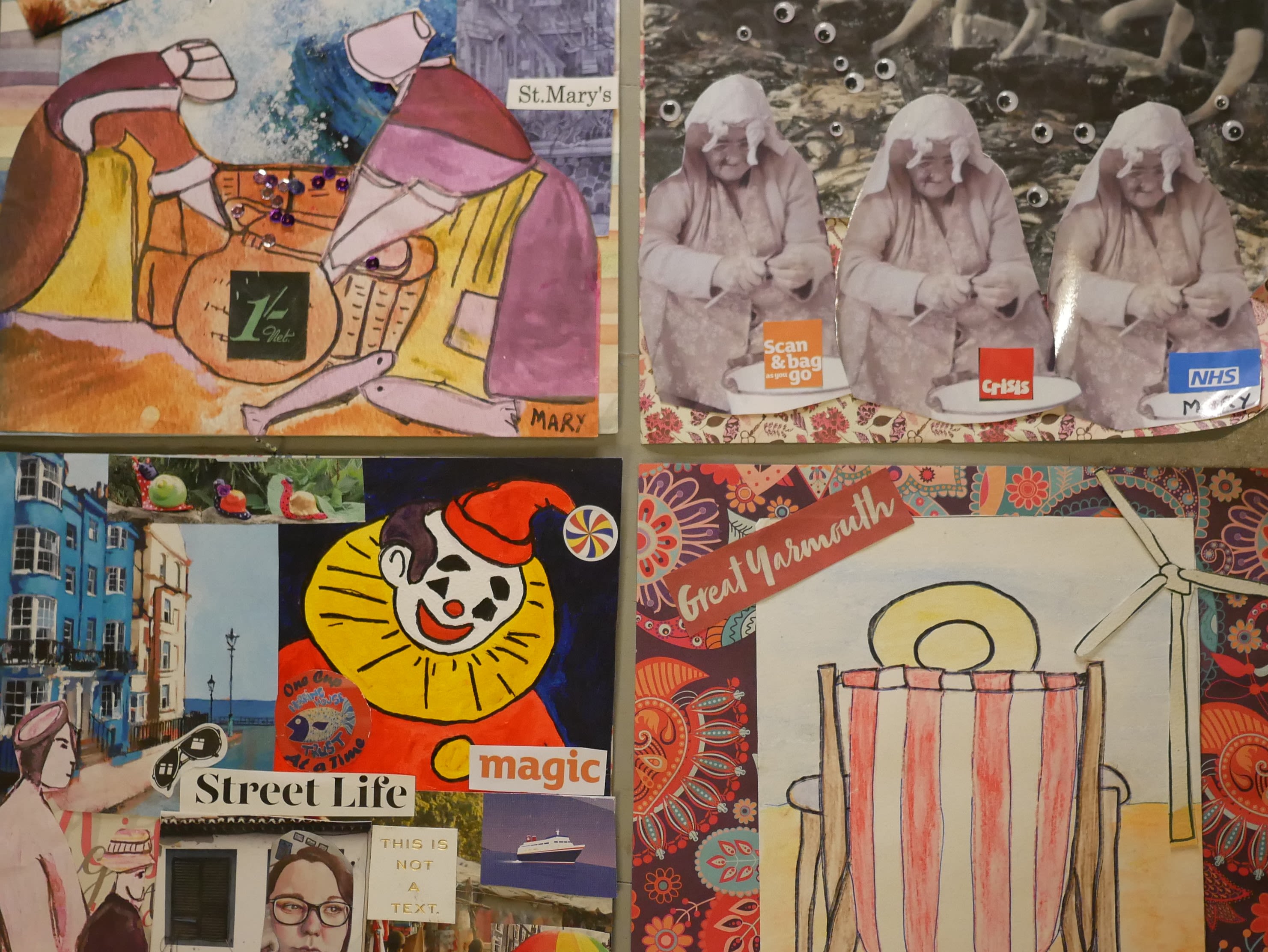
CreativeUEA is an interdisciplinary research theme at the University of East Anglia which builds on a longstanding history of creativity and innovation. Find out more www.uea.ac.uk/creative


